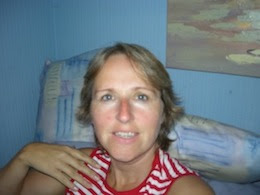THE HYBRID GENRE; A DELICATE BALANCE
By Claudia Riess
I love a good mystery, have a passion for art and am an incurable romantic. Why not combine the three? The hybrid genre does have its challenges, but dealing with them can be as satisfying a part of the creative process as any other, from character-building to plot-mapping.
In my most recent novels, characterized by my publisher, Level Best Books, as an “art history mystery series,” Erika Shawn, art magazine editor, and Harrison Wheatley, art history professor, are amateur sleuths with a dynamic romantic relationship. One way I deal with the balancing act of mystery and romance in this series is deciding that the principal driving force is mystery and sticking to it. To prevent the plot from stalling, I see that Erika’s and Harrison’s personal conflicts have a bearing on their crime-solving. In one instance, say, Erika goes off on a risky mission on the sly, despite Harrison’s adamant opposition. Her decision and his reaction play an integral part in both the plot development and the pair’s evolving relationship.
Something
I have to be on guard about is digressing too long on intimate encounters or
personal-issues-centered dialogue. Both
can break the forward motion of the central plot. I have a tendency to get swept into the
emotional drama at hand, and it’s only later, when I’m reading through the
entire section or chapter where the interlude occurs, that I realize the main
thread’s been lost. Luckily, most of the
time all it takes to resolve the problem is a bit of pruning. On occasion, though, it requires the
interlude’s removal. This can be painful,
but sometimes cutting a manuscript—and an author’s ego—down to size can be an
instructive experience.
The
latest suspense novel set in the art world, Knight
Light,continues the exploits of amateur sleuths Erika Shawn, art magazine
editor and Harrison Wheatley, professor of Art History, as they attempt to
track down a cache of art works looted during Germany’s occupation of Paris and
solve present-day murders related to their search.
Claudia Riess has worked in the editorial departments of The New Yorker magazine and Holt Rinehar andWinston. She has also edited Art History monographs. Riess’s appearances on panels and media interviews are of interest to both authors and readers.
For more about Riess and her work, visit www.claudiariessbooks.com.




Comments